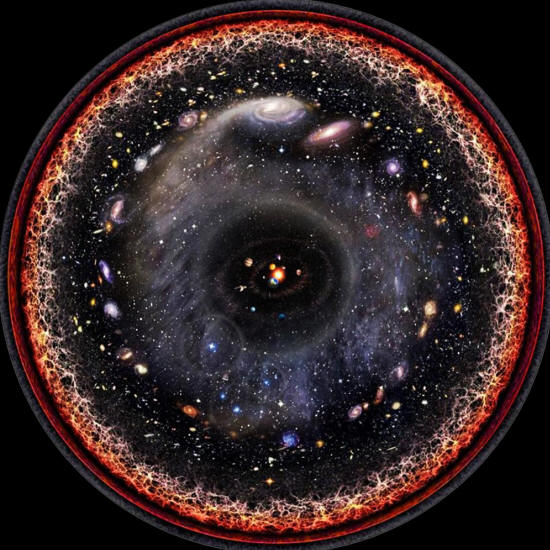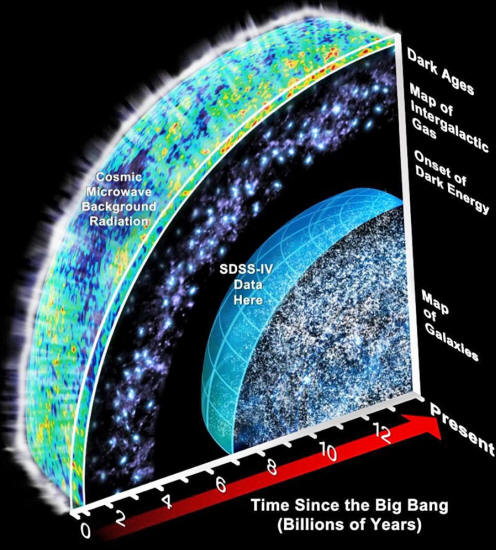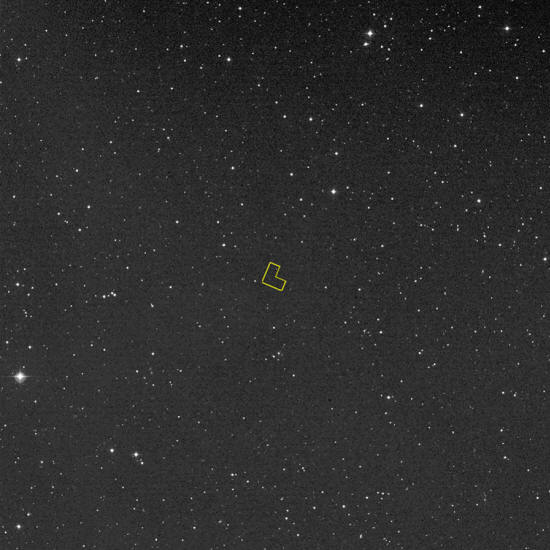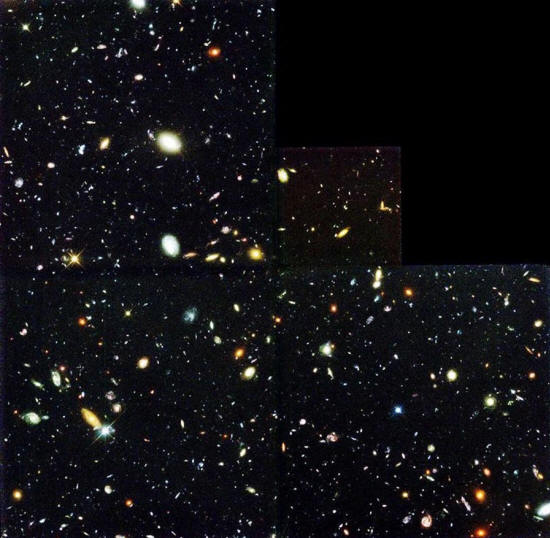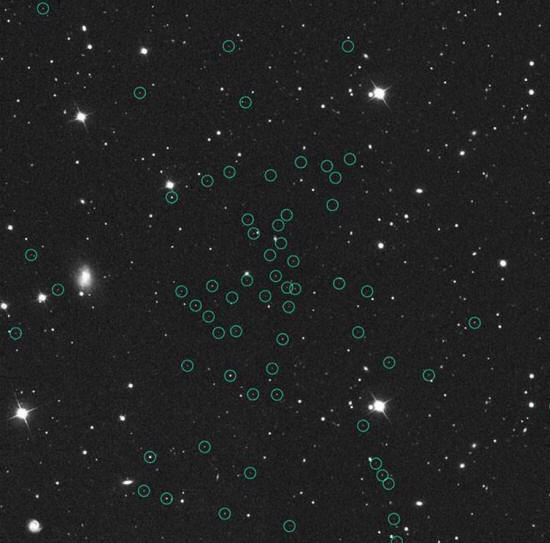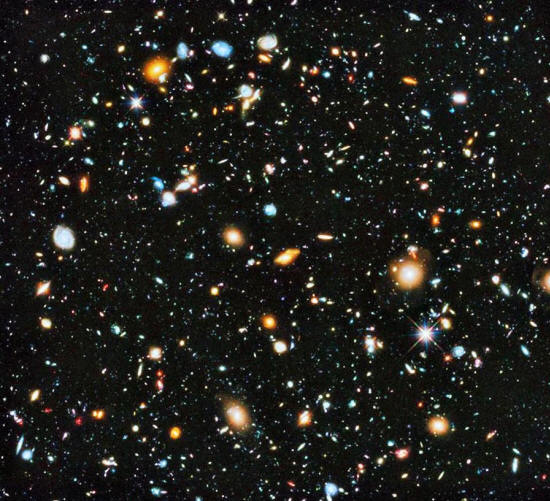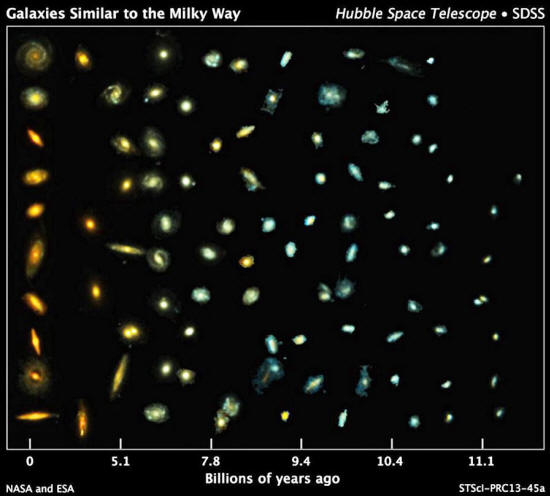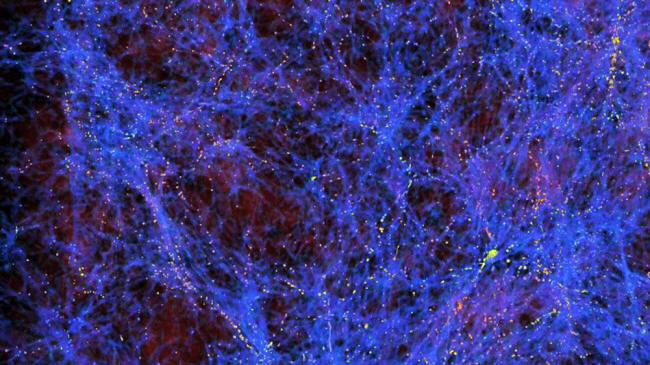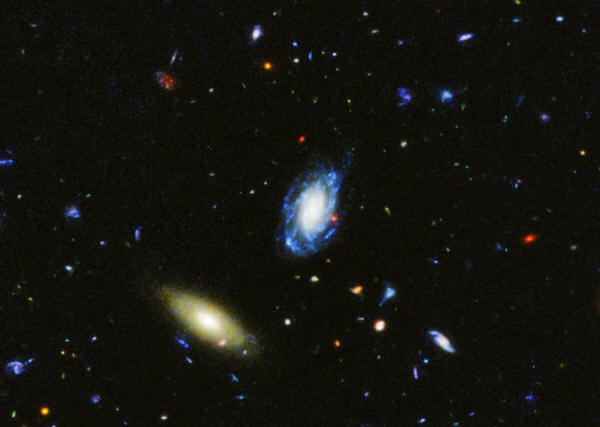|
from Medium Website
Galaxies give way to large-scale structure and the hot, dense plasma of the Big Bang at the outskirts. Trying to figure out how many galaxies exist within the Universe is one of the great cosmic quests of our time.
(WIKIPEDIA USER PABLO CARLOS BUDASSI) only reveals perhaps 10% of what's out there. Here's how we get the rest...
Even though nearly all of
them are invisible to our eyes, our observable Universe, extending
tens of billions of light years in all directions, contains a
fantastically large number of galaxies within it.
If we made the most straightforward estimate using today's best technology, we'd state there are 170 billion galaxies in our Universe.
But we know more than that, and our modern estimate is even grander:
Here's how we got there.
objects tens of billions of light years away, but even with ideal technology, there will be a large distance gap between the farthest galaxy and the Big Bang. At some point, our instrumentation simply cannot reveal them all.
(SLOAN
DIGITAL SKY SURVEY - SDSS)
We'd point our telescopes at the sky, cover the entire thing, collect every photon emitted our way, and detect every object that was out there, no matter how faint.
With arbitrarily good
technology and an infinite amount of resources, we'd simply measure
everything in the Universe, and that would teach us how many
galaxies are out there.
Our telescopes are limited in size, which in turn limits how many photons they can collect and the resolutions they can achieve. There's a trade-off between how faint an object you can see and how much of the sky you can take in at once. Some of the Universe is obscured by intervening matter.
And the more distant an object is, the fainter it appears; at some point, a source is far enough away that even observing for a century won't reveal such a galaxy.
and the farther back we go, the closer to perfectly smooth the Universe gets, but there is a limit to the smoothness it could've achieved, otherwise we wouldn't have any structure at all today. To explain it all, we need a modification to the Big Bang: cosmological inflation.
(NASA,
ESA, AND A. FEILD - STSCI)
The longer you stare at a single patch of sky, the more light you'll collect and the more you'll reveal about it.
We first did this in the mid-1990s with the Hubble Space Telescope, pointing at a patch of sky that was known to have practically nothing in it, and to simply sit on that spot and let the Universe reveal what was present.
shown in the yellow L-shaped box, was the region chosen to be the observing location of the original Hubble Deep Field image. With no known stars or galaxies within it, in a region devoid of gas, dust, or known matter of any type, this was the ideal location to stare into the abyss of the empty Universe.
(NASA /
DIGITAL SKY SURVEY, STSCI)
If it failed, it would have been a waste of over a week of observing time on the newly-corrected Hubble Space Telescope, the most sought-after observatory to take data with.
But if it succeeded, it
promised to reveal a glimpse of the Universe in a way we had never
seen before.
And when that first image finally was processed and released, we got a view unlike any other.
revealed some of the faintest, most distant galaxies ever seen. Only with a multiwave-length, long-exposure view of the ultra-distant Universe could we hope to reveal these never-before-seen objects. (R. WILLIAMS - STSCI -,
THE
HUBBLE DEEP FIELD TEAM AND NASA)
Not just a few, but
thousands upon thousands of them. The Universe wasn't empty and it
wasn't dark; it was full of light-emitting sources. As far as we
were capable of seeing, stars and galaxies were clumped and
clustered everywhere.
The most distant galaxies are caught up in the expansion of the Universe, causing distant galaxies to redshift past the point where our optical and near-infrared telescopes (like Hubble) could detect them.
Finite sizes and observing times meant that only the galaxies above a certain brightness threshold could be seen.
And very small, low-mass galaxies, like Segue 3 in our own backyard, would be far too faint and small to resolve.
in the entirety of dwarf galaxies Segue 1 and Segue 3, which has a gravitational mass of 600,000 Suns. The stars making up the dwarf satellite Segue 1 are circled here. If new research is correct, then dark matter will obey a different distribution depending on how star formation, over the galaxy's history, has heated it.
(MARLA
GEHA AND KECK OBSERVATORIES)
The best attempt we ever made was the Hubble eXtreme Deep Field (HXDF), which represented a composite image of,
...data.
By observing just a tiny
patch of sky so small it would take 32 million of them to cover all
the possible directions we could look, we accumulated a total of 23
days worth of data.
This represented the highest density of galaxies ever observed through a narrow, pencil-like beam in space.
like the Hubble eXtreme Deep Field (XDF) shown here, have revealed thousands of galaxies in a volume of the Universe that represents a fraction of a millionth of the sky. But even with all the power of Hubble, and all the magnification of gravitational lensing, there are still galaxies out there beyond what we are capable of seeing. (NASA, ESA, H. TEPLITZ AND M. RAFELSKI - IPAC/CALTECH - A. KOEKEMOER - STSCI - R. WINDHORST (ARIZONA STATE UNIVERSITY)
and
Z. LEVAY (STSCI))
But that's not an estimate; that's a lower limit.
Nowhere in that estimate do the too-faint, too-small, or too-close-to-another galaxies show up. Nowhere do the galaxies obscured by the neutral gas and dust appear, nor do the galaxies located beyond the redshift capabilities of Hubble.
Yet, just as those galaxies exist nearby, they ought to exist in the young, distant Universe as well.
are numerous, but younger galaxies that are Milky Way-like are inherently smaller, bluer, more chaotic, and richer in gas in general than the galaxies we see today. For the first galaxies of all, this ought to be taken to the extreme, and remains valid as far back as we've ever seen.
(NASA
AND ESA)
If we can run a simulation that starts with,
...we can simulate how such a Universe evolves.
We can simulate when
stars form, when gravity pulls matter into large enough collections
to create galaxies, and to compare what our simulations predict with
the Universe, both near-and-far, that we actually observe.
But unsurprisingly, they're smaller, less massive, and are destined to merge together into the old spirals and ellipticals that dominate the Universe we inhabit at present.
The simulations that
match best with reality contain
dark matter, dark energy, and
small, seed fluctuations that will grow, over time, into stars,
galaxies, and clusters of galaxies.
Identifying which regions are dense and massive enough to correspond to galaxies, including the number of galaxies that exist, is a challenge that cosmologists are only now just rising to.
(DR.
ZARIJA LUKIC)
The remarkable answer?
Yet, that number is so remarkably different from the lower-limit estimate we came up with from the Hubble eXtreme Deep Field image.
Two trillion versus 176 billion means that more than 90% of the galaxies within our Universe are beyond the detection capabilities of even humanity's greatest (actual) observatory, even if we look for nearly a month at a time.
the ultraviolet view of the GOODS-South field, one of which is actively forming new stars (blue) and the other which is just a normal galaxy. In the background, distant galaxies can be seen with their stellar populations as well. Even though they're rarer, there are still late-time galaxies actively forming massive amounts of new stars. (NASA, ESA, P. OESCH (UNIVERSITY OF GENEVA),
and
M. MONTES (UNIVERSITY OF NEW SOUTH WALES))
Even in our own Local Group, we're still discovering galaxies that contain mere thousands of stars, and the number of galaxies we know of have increased to more than 70.
The faintest, smallest, most distant galaxies of all are continuing to go undiscovered, but we know they must be there.
For the first time, we can scientifically estimate how many galaxies are out there in the Universe. The next step in the great cosmic puzzle is to find and characterize as many of them as possible, and understand how the Universe grew up.
Led by the James Webb Space Telescope and the next generation of ground-based observatories, including,
...we're poised to reveal
the hitherto unseen Universe as never before.
|


